Venice is a flat city, it has no great altimetric changes in its territorial conformation. The buildings are rather low, never exceeding 3 or 4 floors.
Yet in this scenario, always very suggestive, break into the elements that for their daring heights impose themselves as protagonists of the Venetian skyline interrupting its horizontality making it more dynamic, making space between red roofs and fireplaces: I'm talking about the bell towers.
Of various styles and shapes they can be described as caskets that keep inside them the bells that interrupt the quiet of the city with their sounds, marking in this way the life of the inhabitants and tourists, today as yesterday
What has just been said is illustrated in a poem by Dante Del Zotto, dated 1912 and dedicated to the master professor Vettor noble Morolin, whose subject is the Bell Tower of San Marco. The poet describes it as a privileged observation point on the lagoon, a lookout tower, but also a lighthouse that indicates the direction to follow to get to the city for foreigners arriving from the sea:
"O bells of my golden St. Mark's Day
Ti xè de la çità
The ocio, wages it, like that treasure
What a place you've got up there.
Sora de ti if you enjoy the view
De la laguna mia,
De sta çità, regina che se chiama.
De pase and de poetry..."
"...come back to you here in the midst of no more
Co l'angolo dirà,
To tell you what comes from the sea, from the gallows,
My Venice is here..."
The bell towers in Venice between construction difficulties and collapses

But why has it not been possible to protect this artistic heritage?
The crux of the matter is this: among the countless cultural assets of the City, the bell towers are considered of secondary importance because they do not contain particularly important works. This has affected the priority of restoration work that has been given to other buildings considered more important. Therefore, the approach to the conservation of the bell towers has been characterized by the preference for constant monitoring of the situations most at risk, although, more recently, it has begun to understand how important studies are to understand the risk factors and prevent any damage or collapse. In this direction, in 2005, studies were planned on the 80 towers of Venice, at the behest of the Soprintendenza per i Beni Architettonici e Paesaggistici di Venezia e Laguna.
The Bell Tower of San Marco: el paron de casa (the landlord of the house)
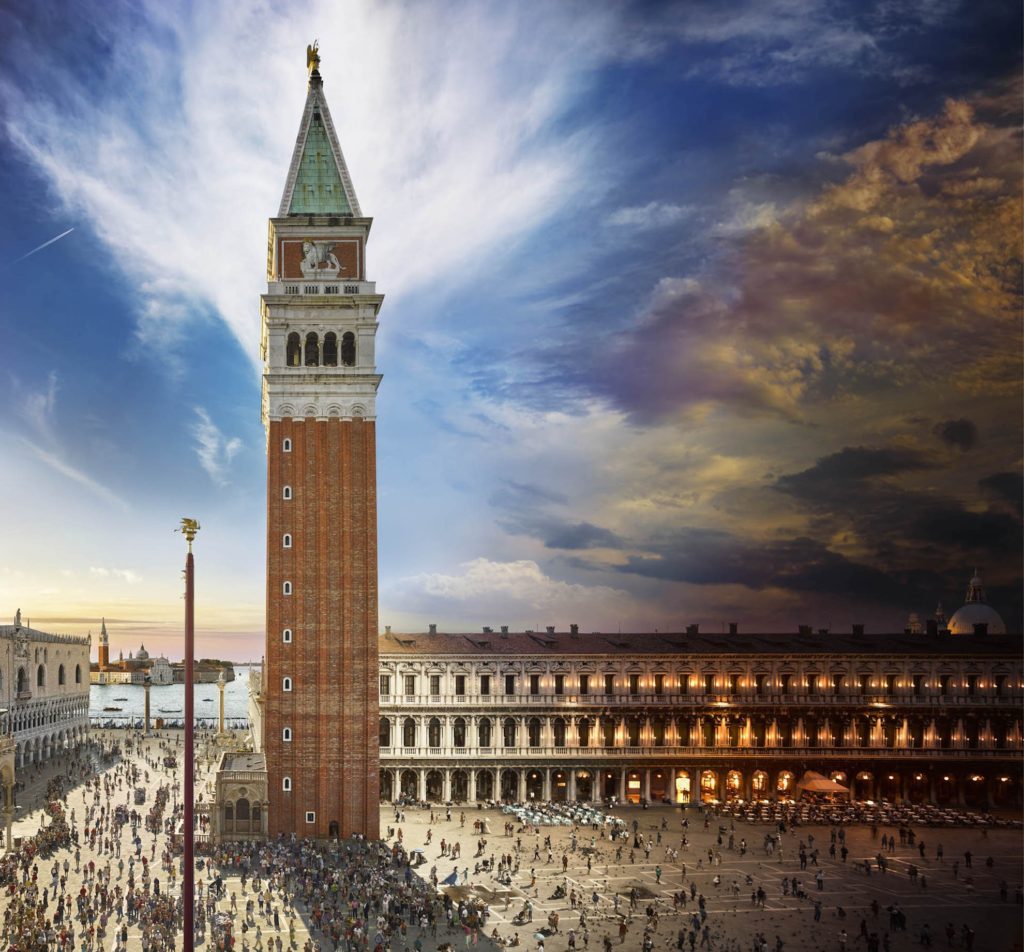
Not an exception is the Bell Tower of San Marco which, although it is the fourth bell tower in Italy for height and the oldest in the lagoon city, has experienced several vicissitudes, until the collapse.The construction of el paròn de casa (the landlord of the house) as the Venetians like to call it, began in the ninth century during the Doge of Pietro Tribuno and had as its initial destination that of lighthouse and watchtower. It is composed of a reed of red bricks 50 meters high and with each side of 12 meters, above which is located the arched belfry which, in turn, at its top is covered by a cube on whose facades are depicted two lions in motion and two female figures representing Justice, then ending with the pyramid-shaped spire, covered with green copper blades, surmounted by the golden statue of the archangel Gabriel that rotates to indicate the direction of the wind: The Bell Tower thus reaches a total height of 98.6 meters, becoming the true emblem of Venice. At its base, on the side facing the basilica, there is the Loggetta of Sansovino, a splendid small building realized by Jacopo Sansovino around the middle of the sixteenth century: of classical taste, it is thought as a triumphal arch richly decorated and in which there are 4 bronze statues representing Minerva, Mercury, Apollo and La Pace.

But the history of the most famous bell tower of the city is really troubled. After a restoration intervention in the twelfth century during the Doge's Palace of Domenico Morosini, in 1489 the structure suffered serious damage following a lightning strike that caused the destruction of the wooden spire, followed by an earthquake in 1511 that made it necessary to consolidate the structure. However, it was only after another lightning strike, which occurred in 1745 that caused the death of some citizens affected by the fall of debris, that the Bell Tower of San Marco was equipped with a lightning rod. From the chronicles of the time it seems that a priest was saved from the disaster in an attempt to get some tobacco, leading him to move away from the place where the accident occurred.
But it was in 1902 at about 9:53 a.m. that el paròn de casa collapsed to the ground, crumpling on itself, destroying also the underlying Loggetta. There were no victims and it seems that the statue of the Archangel in the collapse remained perfectly standing, unharmed.
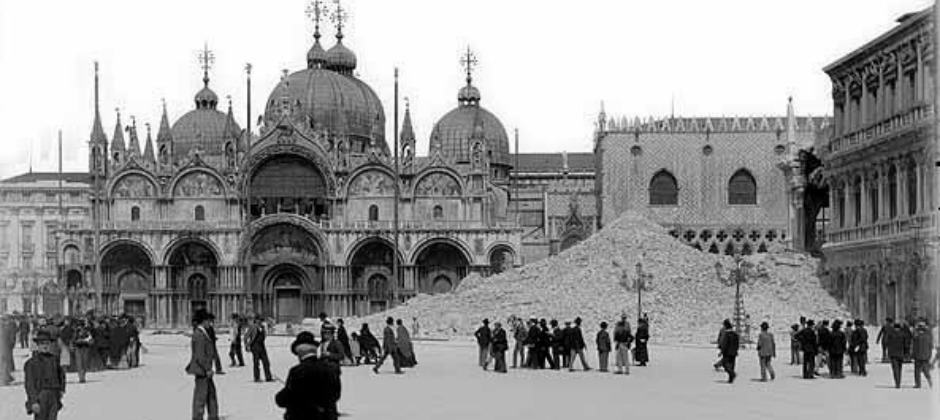
The most famous is the marangona, the only bell that survived the collapse of 1908, therefore the only original element of the entire structure. It is the major bell that sounded the beginning and the end of the working hours of the marangons, the carpenters of the Arsenal, and the meetings of the Major Council: it was the working bell practically. It still rings today, at 12:00 and 14:00. Then there is the nona bell that rang, and it still rings today, at noon and midnight, which were the last hours to be able to send letters from Rialto. The trottiera was the signal for the nobles who had to hurry, trot, to reach the meetings of the Maggior Consiglio in time. The pregadi, instead, took their name from the prayers, that is the members of the Senate of the Republic, and sounded the starting time of the meetings. The maleficio was an omen of death, announcing the time of the executions that took place between the columns of San Marco and San Teodoro. The simultaneous ringing of all the bells was reserved for the celebration of St. Mark's Day, April 25th, and for the major liturgical solemnities of the year.
Today, the view from the top of St. Mark's Bell Tower gives a truly incredible view of the city and the Lagoon! To try!
The hanging and chopped bell towers
In reality Venice encloses three bell towers that are not exactly in axis! This is certainly a lesser known aspect of the city, but one that can be discovered by the most attentive and curious, arousing quite a lot of amazement in them.
What has a lesser inclination among the three is the Bell Tower of San Pietro di Castello, located on the island of the same name, once called Olivolo, in the Castello district.
It was built for the first time in 1463 and rebuilt in 1482 by Mauro Codussi after a lightning strike that damaged the structure. The structure, in Renaissance style, is detached from the body of the church as a closed and fluted Istrian stone building, the only example here in Venice, combining grandeur and elegance together. The present dome, replaced by the previous one due to lightning, has a polygonal drum shape.
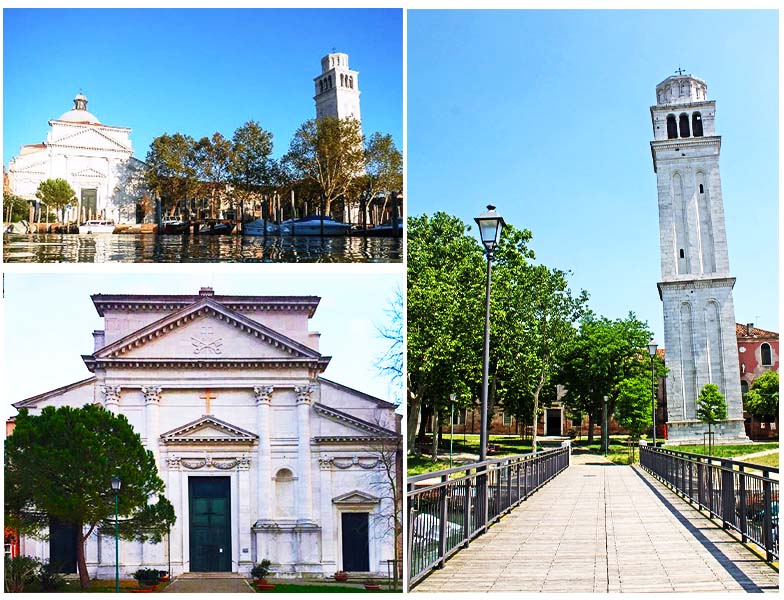
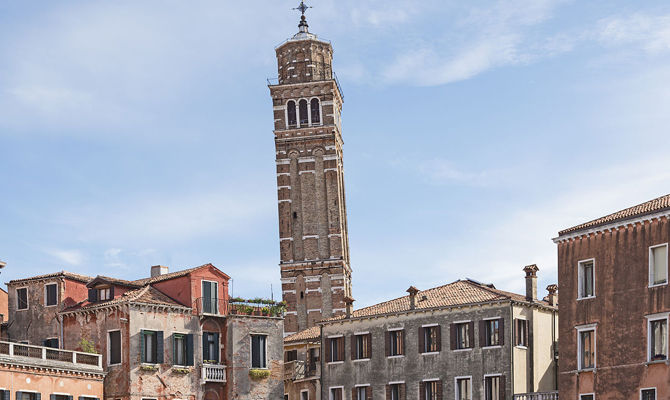
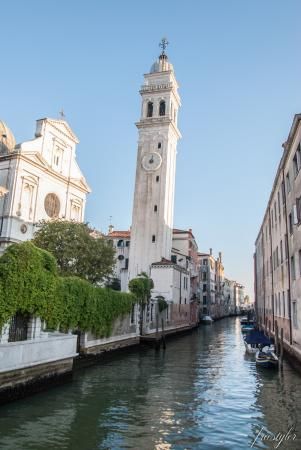
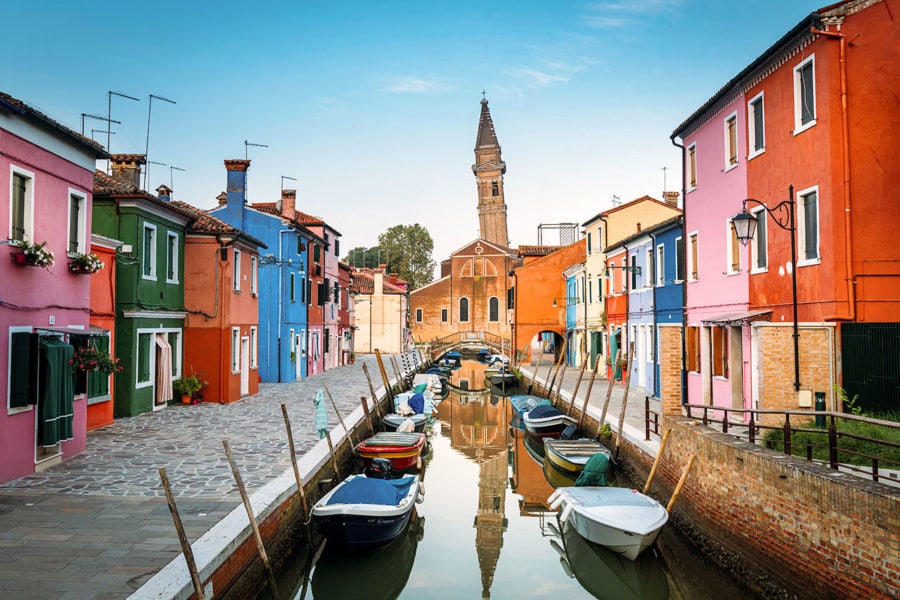
Built in the seventeenth century in Renaissance and Neoclassical style is square and 53 meters high, a peculiarity that makes it easily visible even for those arriving from the sea. At its top there was the angel of San Alipio who collapsed in 1747 and was put away in 1755 and then finally replaced by a cross after being damaged by lightning. Since its construction, due to a ground subsidence, the bell tower is characterized by a slope of 1.83 meters. Among the various restoration works that it has undergone we remember one in particular for its importance carried out between 1703 and 1714 by the architect Andrea Tiralli.
Unfortunately, not all the bell towers have had the fortune to be recovered. Many of them, in fact, have been lost over the centuries, while others have been cut off. Among the latter we find the bell tower of Santa Margerita and the bell tower of San Boldo, which due to the high risk of collapsing were, in fact, cut off, leaving only the lower part as evidence of a past presence. In particular, the first one, that of Santa Margerita, located in the Sestiere di Dorsoduro, has preserved 14 meters of the building and at its base are still visible elements of seventeenth-century marble depicting a dragon and a sea monster. The bell tower of San Baldo, instead, is the only element of the homonymous field that allows us to understand that there was once a church demolished in 1826 to allow the construction of houses. Both bell towers have now become private homes.
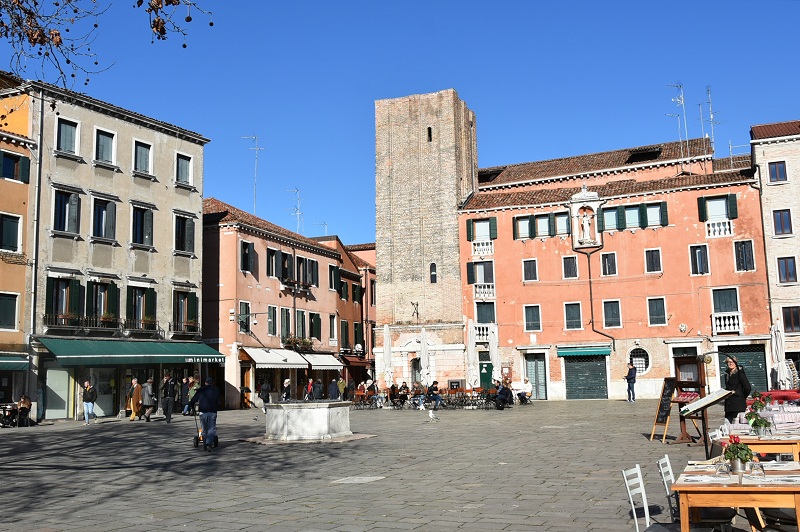
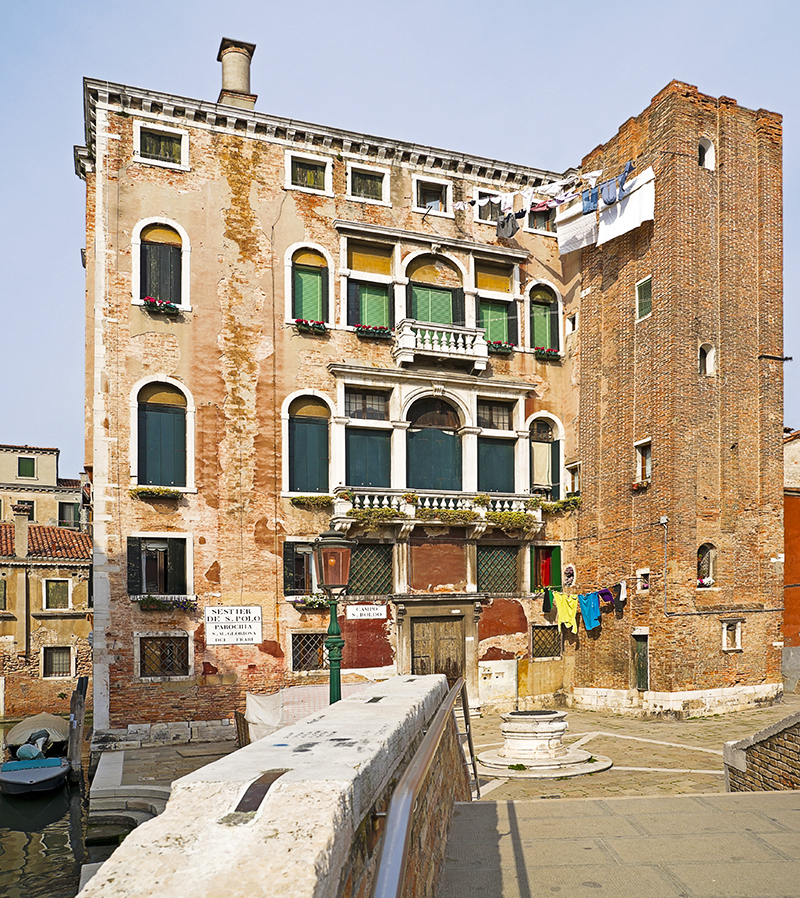
The bell towers between sea, art and music
So I would like to close my article with three other bell towers that I find interesting for different reasons: the bell tower of the Basilica of San Giorgio Maggiore, the bell towers of the Basilica of Santa Maria della Salute and the bell tower of the Church of San Giacomo di Rialto.
The first one, the Bell Tower of the Basilica of San Giorgio Maggiore located on the homonymous island, has a height of 75 meters. Thanks to its strategic position it offers a priceless view of the whole of Venice! You can see the profile of the Doge's Palace, the Island of Giudecca, Punta Della Dogana and for the lucky ones, with particularly clear days, the Euganean Hills and the Dolomites.
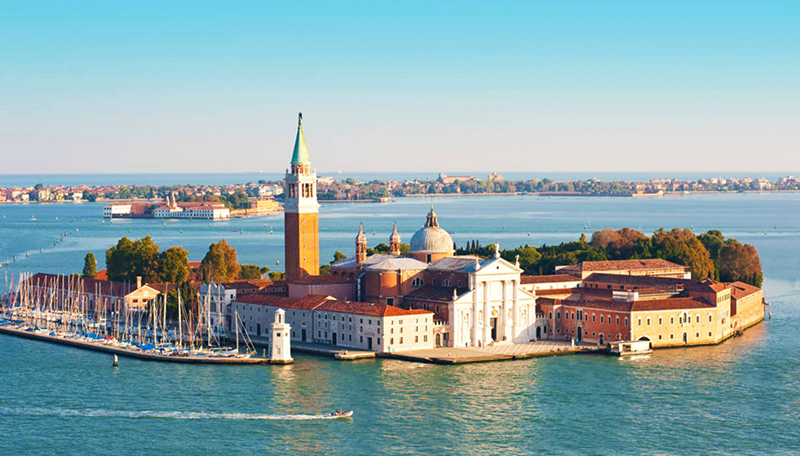
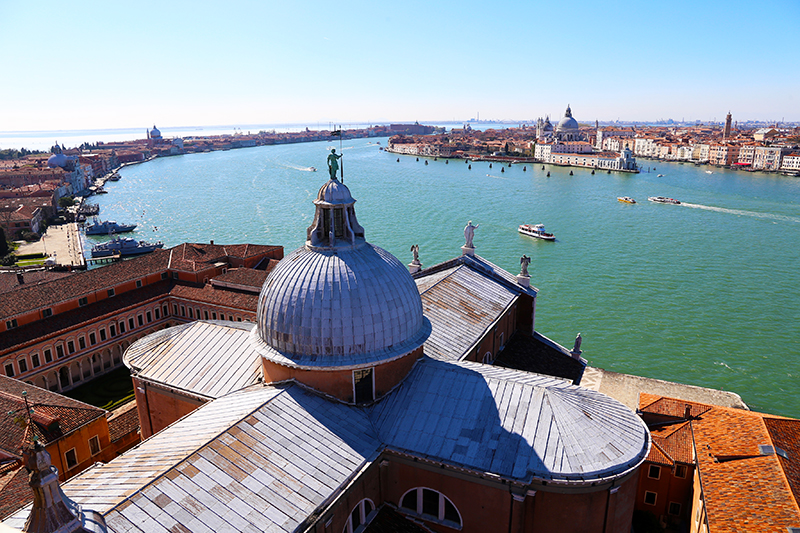
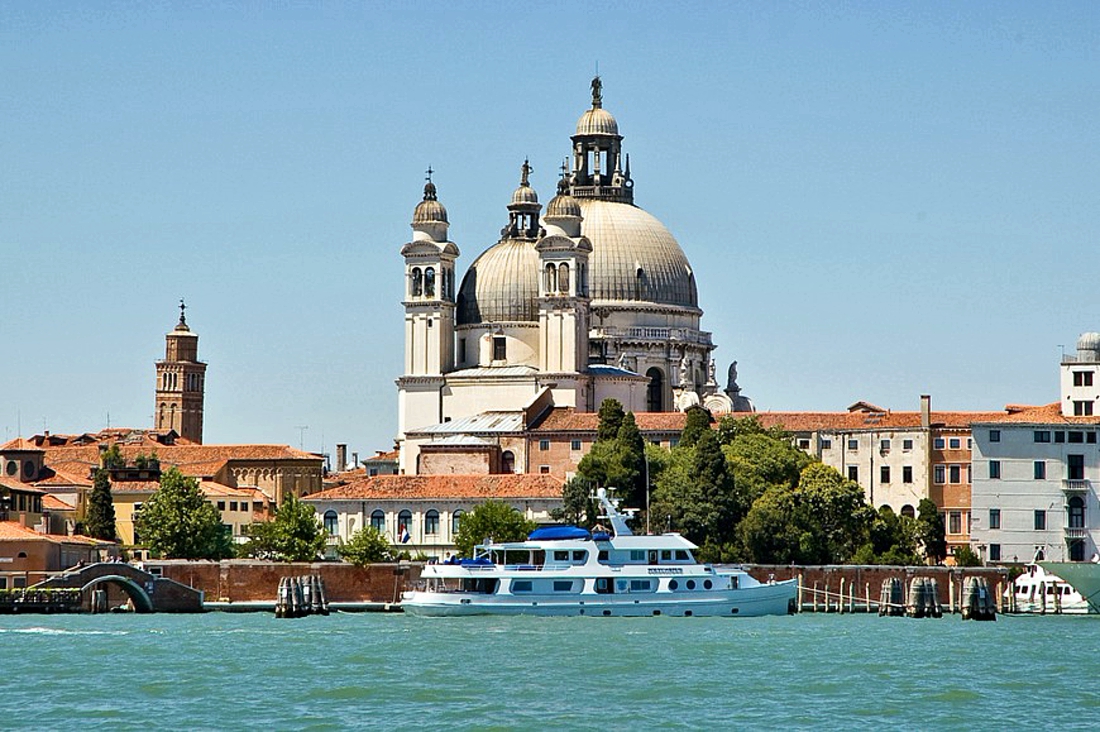
In Sestiere San Polo, near the Rialto Bridge, there is the Church of San Giacomo or San Giacométo, in Venetian. The structure is one of the oldest in the City and dates back to 1152, although several legends want it already existing since 421. In Gothic style, home to the Museum of Music in Venice, where Antonio Vivaldi's instruments are kept, the church has a bell tower different from those examined so far. It, in fact, is called "a vela" because it presents itself as a thin structure placed as a sail, precisely, on the building itself.
An elegant marble structure supports the terminal part with the statue of the Saint. But the real protagonist is the large round clock that marked the hours of the frenetic life that animated the commercial area of Rialto.

In short, we can say that the bell towers of Venice always remain wonderful caskets that behind their undoubted beauty contain truly fascinating stories!
Remember to walk with your nose up!










Lascia un commento